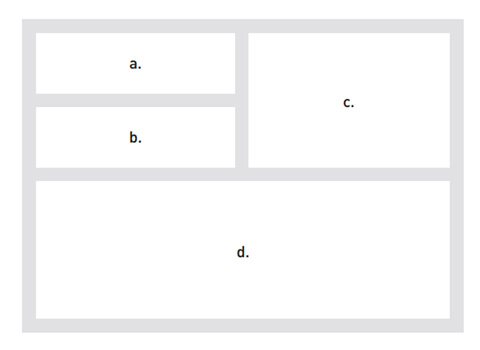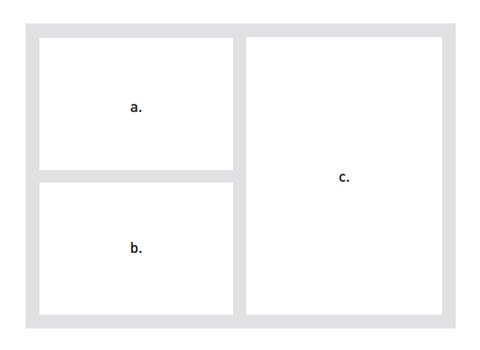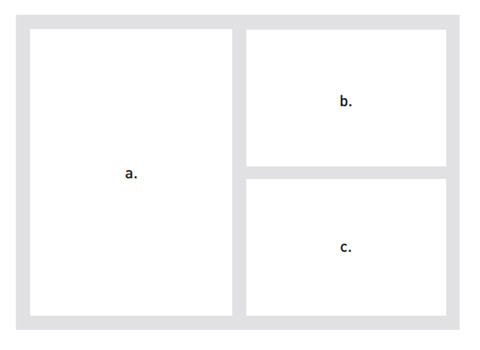Design Portfolio Guide
Design BA (hons)
Industrial Design BA (hons)
Product Design and Technology BSc (hons)
All applicants to the School of Design and Creative Arts at Loughborough University will be required to produce a portfolio to evidence their practical work which will be reviewed by our highly skilled academic staff.
A design portfolio is a visual mechanism through which you can evidence and communicate the various aspects of your design capability and potential.
This document offers general guidance for applicants. In recognition that students have different educational backgrounds and may have undertaken a variety of qualifications, your portfolio will evidence a range of appropriate skills.
This guidance is intended as a guide only and if your application is shortlisted you will be sent information about how and where to submit your portfolio via email, including file sizing and formatting.
If you have any further questions, please email us at: sdcaadmissions@mailbox.lboro.ac.uk
Portfolio guidance
An ideal portfolio will not only showcase your design craft skills and an ability to engage with diverse users and technologies but will also convey your creative approach and decision-making processes. There is only one of you, therefore no two portfolios should be the same.
Before starting your design portfolio, think about your design identity. What sort of designer are you and what sort of designer do you wish to become? Are you more technology focused, or more interested in the form or the user? This will help you to decide what to include and emphasize.
How does your work differ from that of your classmates? Even if you had the same project brief, each decision you made should be unique to you and your design identity. Portfolio content and annotations should reflect this.
We expect to see a range of works in various stages of completion and suggest aiming for around 3 projects in detail with additional sheets to cover any work in progress or potential side projects (a maximum of 25 A3 digital sheets or less).
Please ensure your work is appropriately laid out and legible. Be selective in what you choose to show and as such do not overpopulate pages.
Use text to support images not images to support text – no one is reading an essay; select clear examples across a range of physical and mental design skills, and design processes – aim for impact not your life story; and side projects show experience but also character – choose wisely.
Work on this and take pride in it. This is a representation of your unique design identity.
Top tip
Be selective on what you showcase and don’t simply cram your portfolio with all of your work from past projects. Open your portfolio with what you believe is your strongest project, not necessarily the order they were completed in.
What should I include in my portfolio?
With your design identity sorted, this guide will help you to turn each of your projects in to a 3-6 page professional design portfolio piece.
To help get you started, we have suggested how you may wish to lay out and present the content of your design portfolio. But remember, this is your portfolio, so find what works for you and your own design identity.
The brief/problem
- 1-2 sheets per project introducing the brief or problem you have identified and the research you have undertaken to explore relevant contextual issues. Where appropriate include evidence of user research, inspiration and influences, and other relevant forms of cultural or technological enquiry.
- What was the brief and the project goals? Who were the users and what were their needs and pain points? What methods and tools did you use to understand the problem? What were your key research insights – the issues that surprised you.

For example:
a. Project title
b. A short introduction to the project and the course (e.g. A Level Design and Technology)
c. Your definition of the brief/problem and the user/context
d. Evidence of the research carried out and the key insights
The design process
- 1-2 sheets per project demonstrating your iterative design process and creative responses to the issues you have identified. Where
appropriate include evidence of problem solving through sketch work, virtual modelling, physical prototypes, and other experimentations relevant to your process. - How did you meet the brief of your project? Did you work as part of a team or by yourself? What methods and digital and/or physical tools did you use to solve the problem? How you got to the final design is just as important as the final design itself.

For example:
a. Low/high fidelity sketch work showing a range of ideas
b. Digital modelling and/or physical prototype exploration
c. Evaluation with users and/or studio-based experimentation and testing
The final design
- 1-2 sheets per project communicating your final design and how it has been resolved in relation to your brief or identified problem. Where appropriate include detail of form and/or technological resolution, evidence of user and/or functional evaluation, and other relevant ways of evidencing the project’s success and failures.

For example:
a. A ‘hero’ image of the proposed product and the key features
b. How the product technology works and/or is interacted with by the user
c. Final functional testing and/or user evaluation